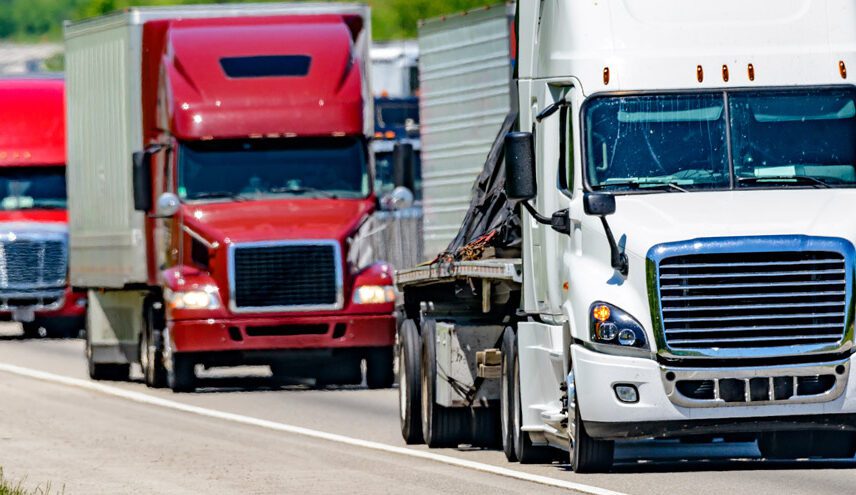What to Know About Commercial Truck Black Boxes

Black boxes have been widely popularized thanks to their appearance in multiple movies and tv episodes. While we most commonly see them used in the context of plane crashes, did you know that they’re actually widely used in the trucking industry too?
Black boxes help investigators gain insight into the causality of a crash and understand exactly what happened leading up to the incident. They are also invaluable tools that help experts to reconstruct truck accident scenes so that the evidence may be used in court.
What else should you know about black boxes, especially regarding how they may impact your truck accident case? Read on to find out!
What is a Black Box Used for?
Black boxes are also known as Electronic Logging Devices (ELDs). ELDS are specifically designed to collect data regarding certain actions, which can provide knowledge about how or why an accident occurred. Black boxes record specific analytics (i.e., movement, speed, etc.) and data from a set time period before a collision occurs. This data can prove to be crucial when during the investigation of a crash.
Additionally, black boxes serve another purpose for truck drivers— they also collect information regarding driving times to ensure that truck drivers comply with federal hours of service guidelines. These guidelines are put in place to limit the number of hours truck drivers work in order to prevent fatigue. Currently, the Federal Motor Carrier and Safety Administration (FMCSA) requires all interstate commercial trucks to have an ELD in their vehicle at all times.
What Things Do Black Boxes Record?
Unlike aviation black boxes, commercial trucks usually don’t have dedicated black boxes installed. However, modern trucks may have electronic logging devices that serve a similar purpose. These devices can record various data in the event of a truck accident.
The specific information recorded can vary depending on the truck’s make, model, and configuration, but it may include:
- Vehicle Speed: The speed of the truck before, during, and after the accident.
- Engine RPM: The revolutions per minute of the truck’s engine.
- Acceleration and Deceleration: Changes in the truck’s speed, including acceleration or braking.
- Brake Application: Data related to the application of the truck’s brakes, including brake pressure and duration.
- Seatbelt Usage: Information about whether the driver and passengers wore seatbelts.
- Airbag Deployment: Data regarding the deployment of airbags in the event of a collision.
- Engine Parameters: Information about the truck’s engine performance, such as throttle position, engine load, and fuel usage.
- Time and Date: Timestamps indicating when the accident occurred.
- Diagnostic Codes: Fault codes or error messages from the truck’s onboard diagnostic system can provide insight into any mechanical or technical issues.
- GPS Data: Location and route information captured through GPS systems, if equipped.
- Steering Input: Data related to the truck’s steering, such as steering angle and rate of change.
- Vehicle Dynamics: Measurements related to the truck’s stability, including lateral acceleration and yaw rate.
How is Black Box Data Collected After a Trucking Accident?
There are a few ways in which data is collected from commercial trucks following an accident. Because not all trucks contain black boxes, the collection of data after an accident relies on whether a truck actually has a black box installed and a variety of other factors, including the following:
Event Data Recorders (EDRs)
Many commercial trucks come with EDRs that work like black boxes. In case of an accident, investigators can extract data from these recorders. They do this by connecting to the EDR through specialized equipment or software that accesses the vehicle’s electronic system.
Onboard Telematics Systems
Nowadays, most commercial trucks have telematics systems that monitor and send real-time information about the vehicle. This data includes details like speed, braking, GPS location, and engine performance. In case of an accident, the information can be accessed either from the central server or by physically connecting to the truck’s telematics system.
Vehicle Inspection
In the event of a trucking accident, investigators can collect evidence by conducting a thorough physical inspection of the vehicle. This includes an analysis of the truck’s braking system, steering mechanism, and engine, as well as a comprehensive evaluation of physical components, tire marks, and damage patterns.
Witness Statements
The eyewitnesses who witnessed the accident can offer crucial insights into the incident, such as the conduct of the truck and the order of occurrences. The testimony provided by these individuals is instrumental in assisting investigators in comprehending the factors that resulted in the accident.
Surveillance Footage
Surveillance cameras provide useful footage in the event of an accident.
Police Reports
When an accident occurs, law enforcement officers who arrive at the scene create comprehensive reports that detail their observations, witness interviews, and initial findings regarding the cause of the accident.
How Can Black Box Evidence Be Used During My Case?
The information contained in a black box can be highly valuable in determining the cause of a truck accident and assigning responsibility. Accident reconstruction experts rely heavily on the data from the black box to piece together the sequence of events that led up to the accident.
Through careful analysis of factors such as the truck’s speed, acceleration, and braking behavior, they can accurately recreate the accident and gain a comprehensive understanding of what happened. Black box data is valuable for determining impact speed, braking patterns, and driver behavior. It reveals important information about sudden accelerations, harsh braking, and erratic steering and can also assist in assessing driver actions and potential negligence. Likewise, it often provides valuable insights into adherence to traffic laws and possible driver errors.
Furthermore, black box data is undeniably helpful in evaluating compliance with commercial truck regulations. It provides critical information on speed limits, hours-of-service regulations, and the proper use of braking systems. By analyzing this data, it is possible to confidently verify or contradict statements made by those involved in an accident. Objective evidence of this nature can be instrumental in insurance claims and legal proceedings.
In accident cases, black box data is often analyzed to determine who is at fault and to negotiate settlements. However, the admissibility and use of this data can vary depending on factors such as the location and specific details of the case. To effectively present this data in court, legal professionals often work with accident reconstruction specialists.
Conclusion
In conclusion, black boxes, or electronic logging devices (ELDs), play a vital role in truck accident cases. They capture essential data about the truck’s speed, engine performance, braking, seatbelt usage, airbag deployment, and more. This information allows accident reconstruction experts to recreate the sequence of events leading up to the accident and assess driver behavior and potential negligence.
After a truck accident, seeking legal counsel is imperative. A skilled lawyer who specializes in truck accident cases will understand the complexities involved and can guide you through the legal process. They can help you navigate insurance claims, negotiate settlements, and protect your rights. With their knowledge of black box data and expertise in presenting evidence, they can leverage this information to support your case effectively.
An experienced truck accident attorney will also help you understand the importance of black box data and how it can impact your case. They will analyze the data to establish liability, assess regulation compliance, and present compelling evidence in negotiations or court proceedings. By enlisting the support of legal professionals, you increase your chances of obtaining the compensation you deserve and achieving a fair resolution to your truck accident case.






